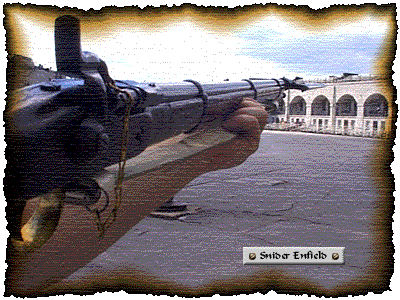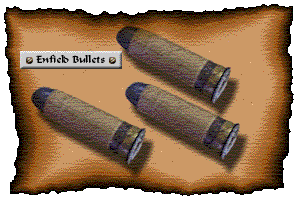

Military technology has always been advancing. Sometimes faster than a country can afford. So too in the 1860s.
A breech-loader rifle was under refinement. It was being developed to replace the muzzle-loading rifles. The breech-loader was a superior weapon because it was quicker to load. The British Army knew, however, that it could not afford to outfit its whole army with this new weapon immediately. They needed a stop-gap weapon that could be used until they could replace all weapons with proper breech-loaders. So, in August 1864 English authorities published an advertisement inviting gunsmiths and others to submit designs that would convert the current muzzle-loading rifle in use (called the Enfield rifle) into a breech-loader.
By 1865, the examining committee recommended the adaptation of a design by Jacob Snider, a Dutch-American wine merchant from Philadelphia. His conversion involved cutting off the last two inches of the barrel, threading it, and screwing on a steel breech block. The breech block hinged to the right side of the barrel. By converting existing Enfield rifles this way, the cost of a "new" breech-loading Snider-Enfield rifle was only 12 shillings.

To load, the breech block was opened to the right, a cartridge was placed in the trough and pushed forward into the chamber and the breech block closed. The hammer was cocked and when the trigger was pulled, the hammer fell onto the firing pin which passed through the breech block. The fired case was extracted by opening the breech, pulling the opened block to the rear, which activated an extractor, and by turning the rifle over, the case would drop out.
 The ammunition for the Snider-Enfield was designed by Colonel Edward Boxer.
It was revolutionary because it was a self-contained cartridge, holding the bullet, black
powder and primer ignition cap all in one case. The case consisted of a layer of thin
brass and paper which was made into a roll. A cup of slightly heavier brass was placed at
the bottom. The two parts were then fastened to a brass washer with a hollow rivet that
became the primer pocket. The case was loaded with 85 grains of black powder and had a
480-grain bullet. The bullet was of a .573-inch diameter, with a clay plug in its hollow
base to expand it to the diameter of the barrel, .577 inches, when fired.
The ammunition for the Snider-Enfield was designed by Colonel Edward Boxer.
It was revolutionary because it was a self-contained cartridge, holding the bullet, black
powder and primer ignition cap all in one case. The case consisted of a layer of thin
brass and paper which was made into a roll. A cup of slightly heavier brass was placed at
the bottom. The two parts were then fastened to a brass washer with a hollow rivet that
became the primer pocket. The case was loaded with 85 grains of black powder and had a
480-grain bullet. The bullet was of a .573-inch diameter, with a clay plug in its hollow
base to expand it to the diameter of the barrel, .577 inches, when fired.
Because of the new system the bullet needed better balance in flight. So, at first, a boxwood plug in the tip of the bullet was used. This was replaced by a hollow in the bullet nose which was covered by spinning lead over it. This "hollow point" caused bloodthirsty results on the battlefield. It is banned in modern warfare, because of its gory and devastating wounds. The hollow point had the effect of causing the lead bullet to expand when hitting soft tissue, tearing out terrible holes in the soldier.
The first shipment of 30,000 Snider-Enfield rifles arrived in Canada in the summer of 1867.
Even though the Snider-Enfield rifle was conceived as a stop-gap design, it served in many parts of the British Empire for over 50 years. In 1874, it was eventually replaced, in most of the British Army, by the Martini-Henry Rifle.
![]()